Empathy
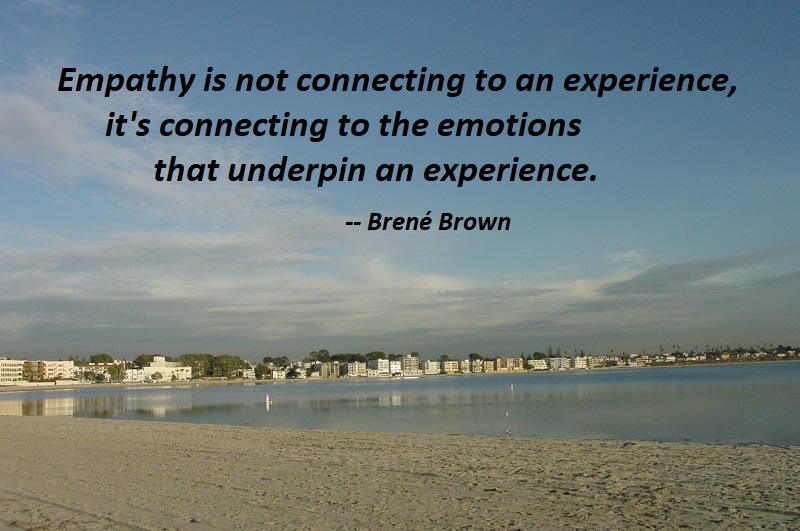
Empathy is not connecting to an experience, it’s connecting to the emotions that underpin an experience.
— Brené Brown, Dare to Lead, p. 140
Photo:Â Mission Bay, California, December 31, 2003

Empathy is not connecting to an experience, it’s connecting to the emotions that underpin an experience.
— Brené Brown, Dare to Lead, p. 140
Photo:Â Mission Bay, California, December 31, 2003
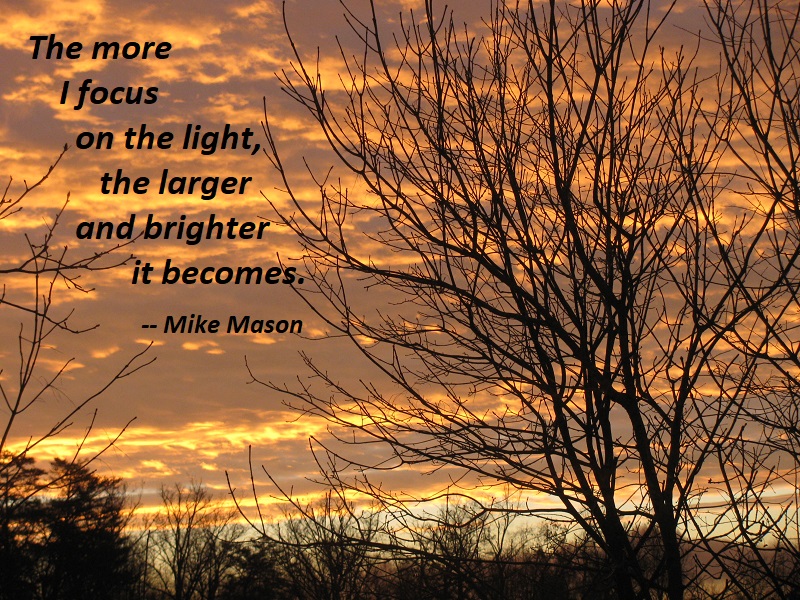
Often when joy seems to fade, I recall Jim Brandenburg’s idea of allowing himself only one photograph per day. Then, turning my mental camera upon the day I’m living, I seek to locate in it the one moment that holds the most joy. No matter how dull or stressful my day may seem, a point of light always gleams. The more I focus on the light, the larger and brighter it becomes. By nourishing one ray of joy like a seedling, joy takes root in me and grows and grows until it fills my heart.
— Mike Mason, Champagne for the Soul, p. 114
Photo: South Riding, Virginia, December 7, 2016
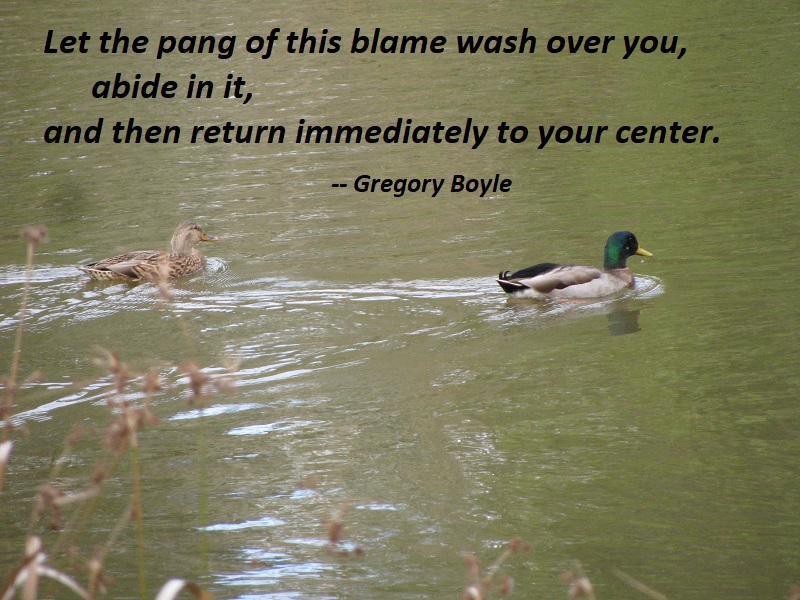
We all clamor for praise and recoil at blame. They are oddly and equally seductive. They pull us away from our center, and yet we strangely have grown dependent on blame and praise. Instead, we have to find our way to notice and return. Notice the positive sheen of praise and still refuse to cling to it. Choose to move quickly back to the center. Let the pang of this blame wash over you, abide in it, and then return immediately to your center. We want the “bliss of blamelessness,” as the Buddha would say, and yet find ourselves attaching to the praise of the crowd or the surly comment of the disgruntled. We try and gently catch ourselves when we’re about to let resentment harden into blame and let the illusion of praise define who we are.
— Gregory Boyle, Barking to the Choir, p. 104
Photo:Â South Riding, Virginia, October 24, 2018
Â
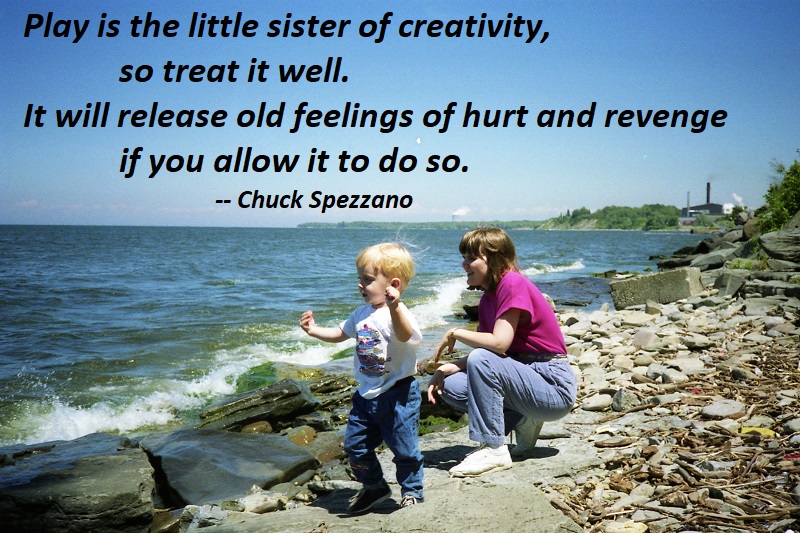
As you are willing to move forward, your playfulness is a way of moving beyond any kind of contraction. Play creates flow. Be willing to share anything that needs to be shared, but be playful about that sharing. See how much you can play today, and how much you can get yourself into the flow. Play is the little sister of creativity, so treat it well. It will release old feelings of hurt and revenge if you allow it to do so.
— Chuck Spezzano, If It Hurts, It Isn’t Love, p. 393-394
Photo: Lake Ontario, July 1990
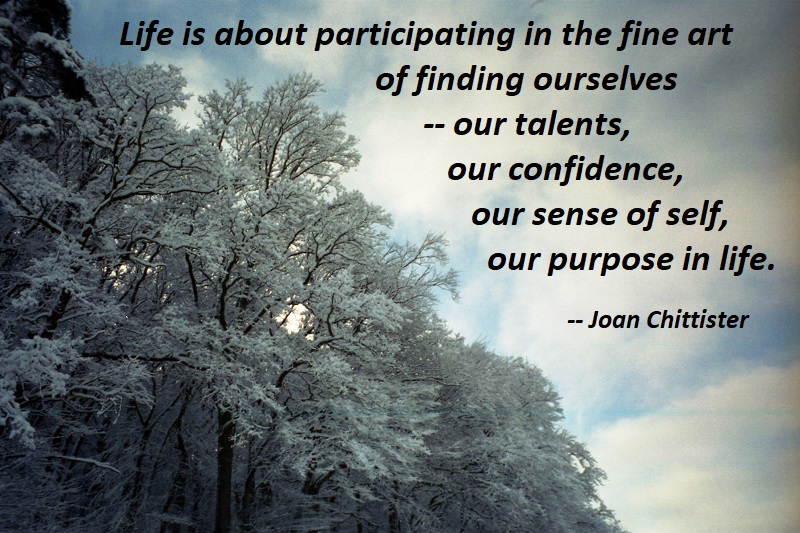
Failure gives us the chance to experiment with life, to play with it a bit, to move in different directions until we find, as we learned from Cinderella as children, the shoe that fits. Because what doesn’t fit will irritate us all our life. We will live in the unnecessary pain that comes from forcing ourselves into something that not only embarrasses us but cramps our hearts and damps our spirits.
Life is about participating in the fine art of finding ourselves — our talents, our confidence, our sense of self, our purpose in life. The world waits for each of us to give back to the best of our ability what we have been given for its sake. The only way to know what that is depends on learning to follow our hearts until our hearts and our abilities are one, until what we love and what we do well are one and the same thing.
— Joan Chittister, Between the Dark and the Daylight, p. 64
Photo: Gundersweiler, Germany, December 1999
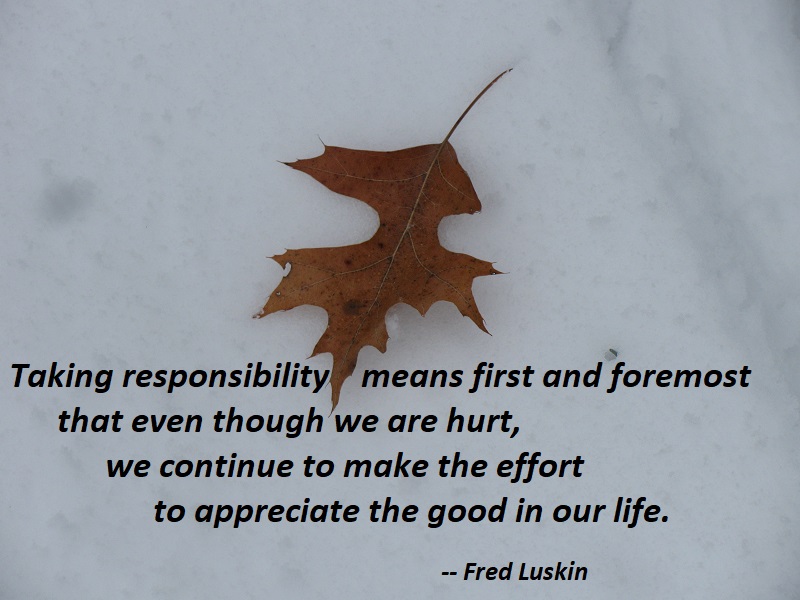
I want to make clear that taking responsibility for how you feel does not mean that what happened is your fault. You did not cause your parents to hurt you or your lover to cheat on you. You did not cause the car to hit you or the illness to strike you. You did not cause your boss to be grouchy nor did you cause the weather to stink on your vacation. While you did not cause these things to happen, you are responsible for how you think, behave, and feel since those experiences occurred. It is your life, and they are your reactions and emotions to manage.
Taking responsibility means first and foremost that even though we are hurt, we continue to make the effort to appreciate the good in our life. When we understand that pain is a normal part of life, we make the effort to keep our hurts in perspective. I challenge the common tendency to feel that our experience of hurt is more real than our ability to feel good. I challenge the tendency to assert that painful experiences are somehow deeper than rapture over the beauty of a sunset or the love we feel for our children.
Many of us are renting more space to rehashing our grievances than focusing on gratitude, love, or appreciation of nature. My central message here is when you bring more positive experiences into your life, your hurts will diminish in importance. In fact, this is the first step to taking responsibility for how you feel and beginning to forgive. If I rent out more and more space in my mind to appreciating my children or the loveliness of a rainy day, there is as a result less space and time for dwelling on the hurts.
— Dr. Fred Luskin, Forgive for Good, p. 111-112
Photo: South Riding, Virginia, March 21, 2018
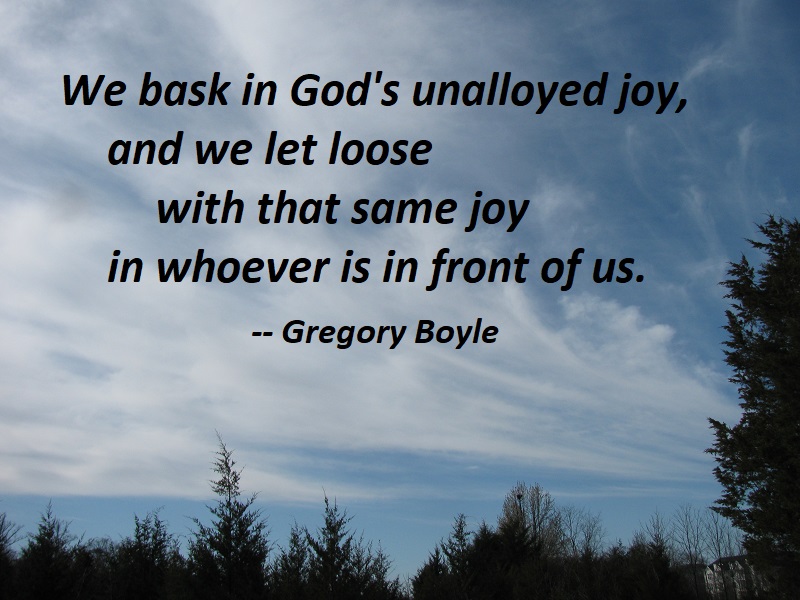
The duty to delight is to stare at your family as they eat, anchored in the surest kind of gratitude — the sort that erases sacrifice and hardship and absorbs everything else. Jesus says, “My ways are not your ways,” but they sure could be. In the utter simplicity of breathing, we find how naturally inclined we are to delight and to stay dedicated to gladness. We bask in God’s unalloyed joy, and we let loose with that same joy in whoever is in front of us. We forget what a vital part of our nature this is.
— Gregory Boyle, Tattoos on the Heart, p. 149-150
Photo: South Riding, Virginia, March 31, 2018
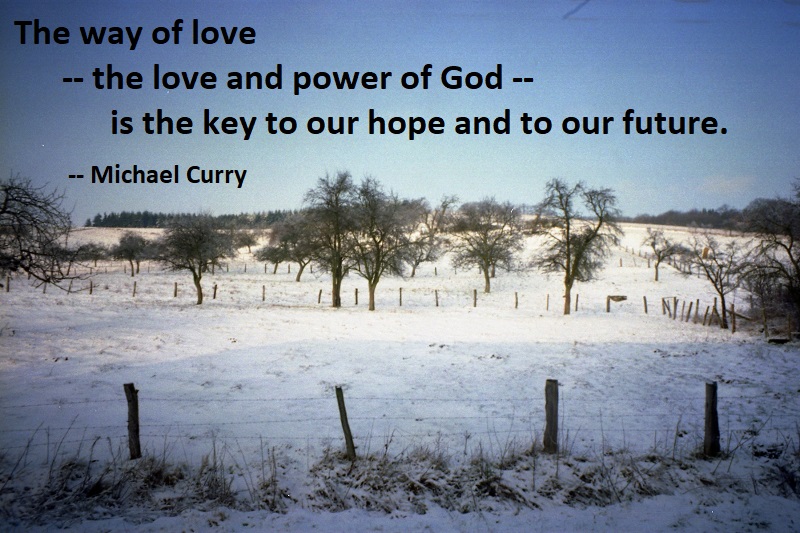
I hope you recognize love as the most powerful force for personal change and for changing the world around us. Yes, we live in scary times. Yes, people are hurting. Yes, people are hurting one another. But anger is not the key; revenge is not the answer. The way of love — the love and power of God — is the key to our hope and to our future.
The message of God is very simple. Love one another. Take care of one another. Take care of creation. And while you’re at it, love me — love God. Do that and you will find your way. That is the core of the gospel. That is the only sermon that matters.
— Michael Curry, The Power of Love, p. xvi.
Photo: Leithöfe, Germany, Christmas 1996
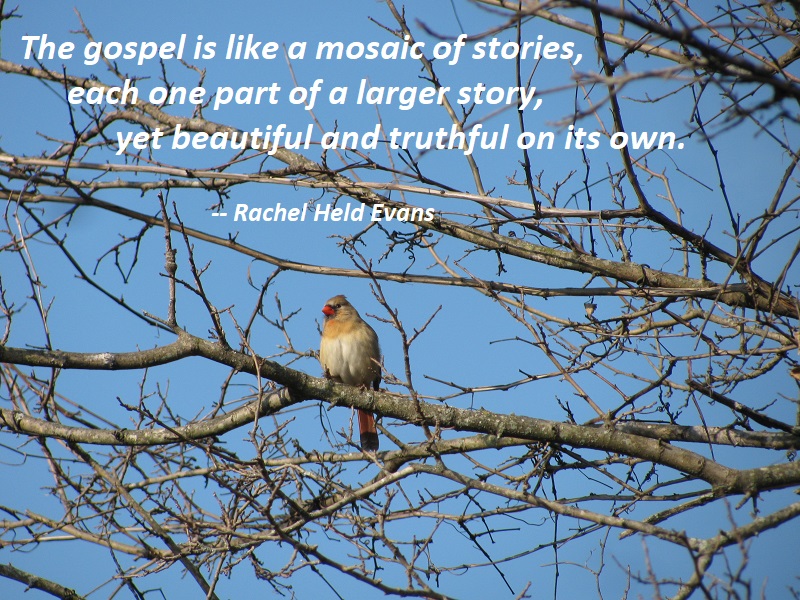
Indeed, in Scripture, no two people encounter Jesus in exactly the same way. Not once does anyone pray the “Sinner’s Prayer” or ask Jesus into their heart. The good news is good for the whole world, certainly, but what makes it good varies from person to person and community to community. Liberation from sin looks different for the rich young ruler than it does for the woman caught in adultery. The good news that Jesus is the Messiah has a different impact on John the Baptist, a Jewish prophet, than it does the Ethiopian eunuch, a Gentile and outsider. Salvation means one thing for Mary Magdalene, first to witness the resurrection, and another to the thief who died next to Jesus on a cross. The gospel is like a mosaic of stories, each one part of a larger story, yet beautiful and truthful on its own. There’s no formula, no blueprint.
— Rachel Held Evans, Inspired, p. 151
Photo: South Riding, Virginia, December 12, 2018
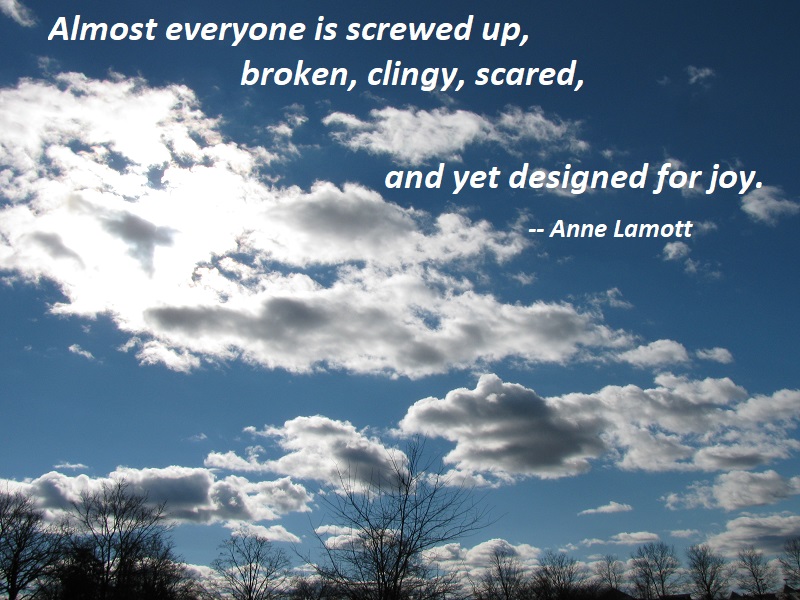
Almost everyone is screwed up, broken, clingy, scared, and yet designed for joy. Even (or especially) people who seem to have it more or less together are more like the rest of us than you would believe. I try not to compare my insides to their outsides, because this makes me much worse than I already am, and if I get to know them, they turn out to have plenty of irritability and shadow of their own. Besides, those few people who aren’t a mess are probably good for about twenty minutes of dinner conversation.
— Anne Lamott, Almost Everything, p. 55
Photo: South Riding, Virginia, December 22, 2018